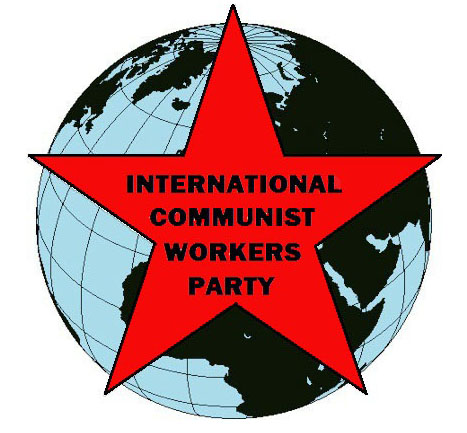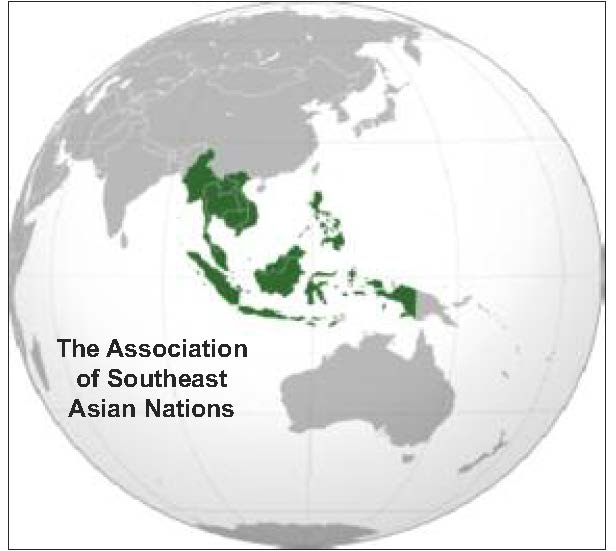
FIGHT FOR COMMUNISM!
International Communist Workers Party
| |
Vietnam-China Clash: |
Industrial Workers Must Lead Fight for Communism, Not Nationalism |
| |
|
In mid-May, US President Obama had just returned from his
military-diplomatic trip to Asia. A summit of the Association of Southeast
Asian Nations (ASEAN) was starting.
The Chinese state-owned oil company CNOOC chose this moment to park a huge oil rig in Vietnamese coastal waters (also claimed by
China) surrounded by a large armed flotilla. 
Vietnamese and Chinese ships rammed each other and fired water cannons
while the US did nothing and ASEAN expressed vague concern. ASEAN was founded in 1967 (with US encouragement) by Indonesia,
Malaysia, the Philippines, Singapore and Thailand. It includes Brunei, Cambodia, Laos,
Myanmar and Vietnam. But today,
most ASEAN countries have strong economic ties with China. Caught between US and Chinese
imperialism, many are choosing China.
The Vietnamese government mobilized huge nationalist anti-Chinese
protests. Suddenly the ruling
"communist" party – supposedly allied with the Chinese "communist" party – started
publicizing the 1979 China-Vietnam border war which had largely been covered
up. Instead of squashing rallies as
usual, it sent cameras to cover them. But the mass movement spun out of the Vietnamese rulers' control. Workers and youth swept through
foreign-owned factories, some attacking Chinese workers and some burning down
entire plants. A thousand were
arrested. "The labor union was set
up only for the sake of
abiding by the law," said a
Vietnamese worker in a
Taiwanese-owned factory
Vietnamese "communist" officials were horrified, but not by the
anti-Chinese racism.
"We must take concrete action, otherwise investors will hesitate to come
here," one said. Now police and military are deployed to prevent further
demonstrations. This is the bitter fruit of the nationalist politics that misled the
heroic struggle of the Vietnamese masses against French and then US imperialism
in the 1950s-1960s. Racism and Nationalism – Or Class-Consciousness? Workers and youth who are won to Vietnamese
nationalism and its flip side, anti-Chinese racism, are digging their own
graves. Western media claim that Vietnamese workers burned down South Korean,
Hong Kongese and Taiwanese factories "by mistake"
because they couldn't tell the difference between these countries and
China. This is an insulting lie. A Taiwanese researcher explained the real issue: "The influx of foreign companies in
Vietnam has widened the wealth gap there… [T]he core
anger and fear is against foreign exploitation." Since 2005, workers have mobilized in wave after wave of massive illegal
strikes against sweatshop conditions in factories run by Nike, Foxconn, and other capitalist enterprises encouraged by
Vietnam's socialist government. The
unions suppress these strikes, which continue to grow. "The labor union was set
up only for the sake of abiding by the law," said a Vietnamese worker in a
Taiwanese-owned factory. As in El Salvador and South Africa, Vietnamese and all workers must draw
the correct conclusion from the political errors and betrayals of parties once
respected by the masses as revolutionaries: Our hopes and our fights
for a better life must lead us to mobilize for COMMUNISM and nothing less. Inter-Imperialist
Conflict Makes Communist Mobilization Increasingly Urgent China's oil-rig adventure directly challenges
Obama's "pivot to Asia." China may
have been emboldened by US imperialism's passivity in Ukraine and Syria. The cover of The Economist
(mouthpiece of British
imperialism) wondered, "What Would America Fight For?" US allies also wonder.
Pro-US analyst Carl Thayer predicted that the Philippines, Vietnam,
Malaysia, Singapore, and Indonesia will "shore up their own maritime
capabilities and seek reassurance of support from the United States and other
maritime powers such as Japan, Australia, and India." The increasing militarization of the region includes Japanese Prime
Minister Abe's campaign to reconsider "Article 9" of Japan's constitution,
which prohibits Japanese military involvement outside its own borders. Also, Vietnam is building up its
submarine fleet, helped by Russia and India. It's seeking closer military ties with
Russia. "Between the certainty that
any president will defend America's own territory and the strong belief that
America would not fight Russia over Ukraine lies an infinite combination of
possibilities," wrote The Economist.
This "risks making the world a more dangerous, nastier place." Some US imperialists want a stronger response. The US should "offer support to Vietnam
through an increased naval presence," say Elizabeth Economy and Michael Levi of
the Council on Foreign Relations. We've heard it said that a US-China war is unlikely because of their
economic interdependence. History
should squash this dangerous illusion.
In the 1930s, 60% of US foreign investment was in Nazi Germany. Even in
1941-42, companies like ITT, Ford, General Motors, Standard Oil of New Jersey
and Chase did business with Germany, including sales of military materiel. Neither the US rulers nor the Chinese rulers seem to want war now. But both want control of South China Sea
oil and gas. An Exxon-Mobil rig is
operating near the Chinese rig. And
both need to defend or extend their empires in Asia-Pacific and elsewhere. Global capitalism's internal logic propels it toward world war. The urgency of mobilizing for communism
has never been greater. |